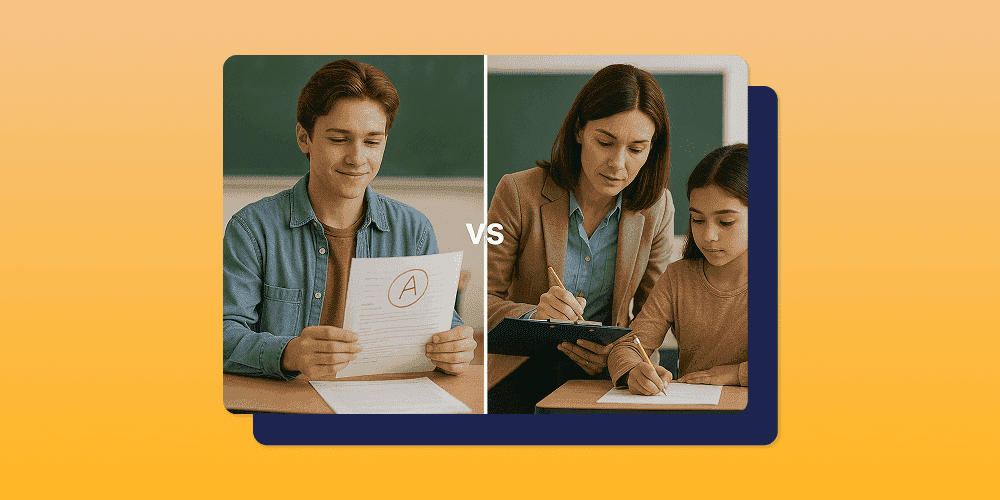
American summer tour! Wooclap will be at InstructureCon 2025
Come say hi at booth 41 from July 22nd to July 24th in Spokane, Washington
Change things up with Interleaving
30.10.2018 • 3 minutes

Combining Spaced and Retrieval Practice: The Benefits of Interleaved Learning
Interleaving is a highly effective learning and teaching strategy that involves spreading the study of topics over time and mixing up the order of topics studied. In the example below, six hours of learning six different topics in a row are cut into twelve 20-minute sessions, alternating the different subjects.

This method draws its benefits from two other learning strategies:
- Spaced practice, which essentially means studying more often, but for shorter intervals;
- Retrieval practice, which involves deliberately calling information to mind that has been previously stored in long-term memory. Asking students to regularly recall recently acquired knowledge allows them to create various recall pathways to that information while connecting it to other prior knowledge, further strengthening those memories so they will last longer.
Interleaving is harder than simply studying one subject at a time during longer and uninterrupted sessions, but switching from one subject to another creates longer-lasting memories by combining the memory advantages of both spaced practice and retrieval practice. Though we may feel like we remember more after focusing on a single topic for an extended period of time than we do after alternating subjects during that time, this is not true in the long run.
How to implement interleaving?
First, it is important not to switch between subjects too much or have intervals that are too short. Don’t use blocks of less than 20-30 minutes or you might suffer the negative consequences of multitasking.
Secondly, try to be efficient when switching from one study session to the next, or you risk wasting time in the process. As a learning method, interleaving requires good planning and organisation, while as a teaching strategy the sequence of topics must take into account how they can build on each other. The topics of an interleaving session can cover different subjects, but the strategy is most efficient when the subjects are related in some way.
Interleaving is more complicated than spaced and retrieval practice, but just like for these other two methods, the aim is not to facilitate studying, but to help students create long-lasting memories and understanding of the course material.
Content drawn from “_The Science of Learning — What Every Teacher Should Know_”, EdX: https://www.edx.org
Writer

Gauthier Lebbe
Content Editor @Wooclap. I love to write, learn, write about learning, and learn about writing. And hit readers with puns they don't see coming. You know, sucker puns.
A monthly summary of our product updates and our latest published content, directly in your inbox.



